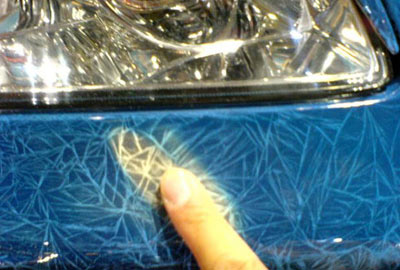 Over the past 50 years, the automotive paint industry has undergone significant transformations in both color and formulation. From the base materials to the topcoats, there has been a noticeable shift toward more advanced and environmentally friendly options. By the 1990s, environmental concerns began to take center stage globally, prompting a move from traditional solvent-based paints to waterborne coatings, which are now widely adopted in many developed countries.
Car topcoats are typically high-gloss enamels that offer excellent mechanical properties and weather resistance. High-end vehicles often use resins such as amino, acrylic, alkyd, polyurethane, and polyester as their base materials. Pigments like titanium dioxide, phthalocyanine, and vibrant organic colors with strong UV resistance are commonly used. Additives are also included to enhance appearance and performance. However, in China, most manufacturers still rely on solvent-based systems, while some Western countries have already transitioned to water-based alternatives.
China's automotive coating industry has seen rapid growth, with its total production ranking first globally in 2009. Despite this, the quality and variety of automotive coatings in China still lag behind international standards. The main challenges include a lack of innovation, outdated production technologies, and limited equipment capabilities. Domestic brands hold only a small share of the market, and intense competition among similar products has led to thin profit margins—often below 10% for the industry as a whole. This highlights the vast potential for future development in China’s automotive coatings sector.
Looking ahead, Zhongan Consultant Coating Research Center outlines a strategic roadmap for the industry:
First, companies need to rethink their approach and develop a comprehensive understanding of the entire paint lifecycle. This includes not just product development but also application and service. Many Chinese paint firms have overlooked the importance of the coating process, and even those that recognize the issue still fall short compared to foreign counterparts. Emphasizing the integration of paint and application will open up new opportunities for growth.
Second, learning from global experiences while pursuing independent innovation is essential. While technology transfer and market access have played a key role in China’s development, relying solely on foreign brands limits long-term autonomy. To secure a sustainable position in the market, Chinese companies must invest in R&D and build their own technological capabilities.
Third, embracing internationalization is crucial. By leveraging domestic strengths and integrating advanced technologies from around the world, Chinese paint companies can enhance their competitiveness. Collaborations with foreign enterprises and a focus on innovation will help the industry move toward a more globalized and forward-thinking future.
Over the past 50 years, the automotive paint industry has undergone significant transformations in both color and formulation. From the base materials to the topcoats, there has been a noticeable shift toward more advanced and environmentally friendly options. By the 1990s, environmental concerns began to take center stage globally, prompting a move from traditional solvent-based paints to waterborne coatings, which are now widely adopted in many developed countries.
Car topcoats are typically high-gloss enamels that offer excellent mechanical properties and weather resistance. High-end vehicles often use resins such as amino, acrylic, alkyd, polyurethane, and polyester as their base materials. Pigments like titanium dioxide, phthalocyanine, and vibrant organic colors with strong UV resistance are commonly used. Additives are also included to enhance appearance and performance. However, in China, most manufacturers still rely on solvent-based systems, while some Western countries have already transitioned to water-based alternatives.
China's automotive coating industry has seen rapid growth, with its total production ranking first globally in 2009. Despite this, the quality and variety of automotive coatings in China still lag behind international standards. The main challenges include a lack of innovation, outdated production technologies, and limited equipment capabilities. Domestic brands hold only a small share of the market, and intense competition among similar products has led to thin profit margins—often below 10% for the industry as a whole. This highlights the vast potential for future development in China’s automotive coatings sector.
Looking ahead, Zhongan Consultant Coating Research Center outlines a strategic roadmap for the industry:
First, companies need to rethink their approach and develop a comprehensive understanding of the entire paint lifecycle. This includes not just product development but also application and service. Many Chinese paint firms have overlooked the importance of the coating process, and even those that recognize the issue still fall short compared to foreign counterparts. Emphasizing the integration of paint and application will open up new opportunities for growth.
Second, learning from global experiences while pursuing independent innovation is essential. While technology transfer and market access have played a key role in China’s development, relying solely on foreign brands limits long-term autonomy. To secure a sustainable position in the market, Chinese companies must invest in R&D and build their own technological capabilities.
Third, embracing internationalization is crucial. By leveraging domestic strengths and integrating advanced technologies from around the world, Chinese paint companies can enhance their competitiveness. Collaborations with foreign enterprises and a focus on innovation will help the industry move toward a more globalized and forward-thinking future.Reliable Air Release Valve, Air Safety valves, Air Valve For Pipeline, Air Relief Valve, choose the high quality Air Release Valve For Pipelines.
Air Release Valve, Air Safety valves, Air Valve For Pipeline, Air Relief Valve
Zhejiang Philic Fluid Control Co.,LTD , https://www.philicflow.com